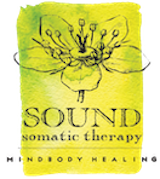5 Simple Activities to Help You Feel Better
I used to send these out as emails, but I decided to make it easier and just post them all on my website. They are simple tools that can help in the moment and that can also be practiced regularly to help with nervous system regulation. You might spend a little time with each one before going to the next one, some of them build on the skills that come before them.
#1 Orient to Your Environment
Therapy, yoga and other spiritual/healing modalities can emphasize looking inside, at our internal experience. When there are big feelings and reactions happening, we can actually get stuck there and lose touch with what is going on in the external world. On the other hand, some of us are drawn to focus on the outside in a hypervigilant way, looking out for danger or what is wrong. Both of these can feed into a cycle of decreasing our sense of safety
In this activity, we are going to practice tuning in to the external environment with curiosity (or at least neutrality). It turns out that looking around and seeing things in my surroundings in this way actually engages the parasympathetic nervous system (PSNS). The PSNS helps us settle down and return to equilibrium after we have been stressed, anxious, upset or even excited. It gets us into “rest and digest” mode. In addition to going down to the chest and belly, the PSNS nerves go the face and throat, so when we orient, we stimulate the PSNS to create a calming respons.
So here’s what you do:
Let your eyes wander around (and your other senses too). Just noticing—you don’t have to make any evaluation or think anything at all, you’re just seeing what’s there. It might go something like this:
I see the tree branches outside blowing in the wind. I see the bumpy texture of the wall. I see a pile of five books. I hear a car driving by. I see an orange post-it note. I see my phone sitting on the desk. I see a box of tissues with a blue and white leaf design .
That’s it!
If you do a little check-in before and after, you might be able to tell a difference. If you do it when you are actually feeling a little agitated or upset, I bet you’ll be able to notice a change. You can do it for a few moments or longer. I suggest you take orientation breaks throughout the day, in addition to having it in your back pocket for first aid.
You’re not trying to distract yourself or push your feelings down, you are just remembering that there is a whole big world out there and you are getting your parasympathetic nervous system working so you will feel better.
This is a pretty easy practice for a lot of people, but there may be times when looking around feels really hard. It may even feel like you just can’t get your eyes to move around—don’t force it. If your eyes are open, then you can see something. Just start with whatever your eyes can already see; notice as much as you can and, who knows, maybe they’ll start to venture out. Another strategy if visual orientation isn’t happening so easily is to focus on orienting with your ears—notice everything you are hearing. If the pull to pay attention to your internal experience is strong, you can name the things you are seeing or hearing out loud.

